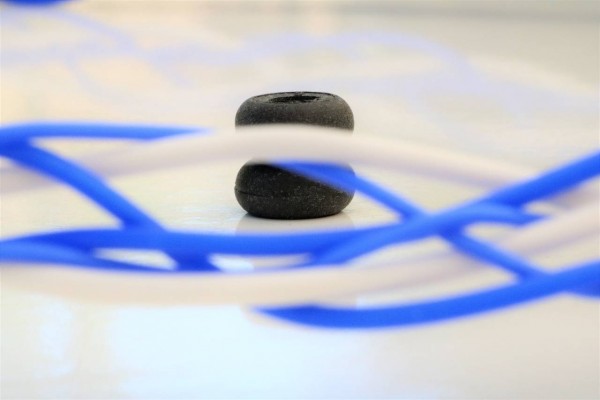What do the best audio cables sound like? Part 2 - Image and soundstage size
9th May 2020

A guide as to what the best hifi audio cables and interconnects sound like. Part 2-Image and soundstage size
Hifi systems have a degree of flexibility when it comes to involving the listener providing you understand how to tune them using audio cables.
Without correct matching of audio and speaker cables hifi components can fall short in different areas of performance. Put simply, to get the best out of your audio system, to release its full potential, you really need to take cables seriously.
Picture the soundstage in your hifi audio system. What do you see? It has depth, height and width (as in the diagrams above) and musicians will appear to be placed at various points within this soundstage.
We could have a hifi system that views this soundstage up close (as shown on the right above) or stepped back, to create some distance from the musicians (as on the left).
In the latter case we can’t quite see everything each individual is doing but musically we can take in the whole picture without distraction. On the other hand, this arm’s-length approach can feel a little disconnected; we may feel we want to get a little closer to the band, see a little more of what each musician is creating for us in the recording.
Move towards the soundstage and we can indeed see more detail from individual musicians; they have increased in size and the whole soundstage has become wider and taller.
These presentations are the key to musical enjoyment. I have listened to expensive high-end audio components that placed the soundstage so far away I was tempted to ask for a pair of binoculars. On the other hand, I have heard hifi systems present such large images I felt I was peering out from beneath the piano lid, which I wrote about in my 2008 article The Idiot’s Guide To Cables (HIFICRITIC Vol2, No6). These are extreme examples and the ideal audio experience for each of us will be different, but we’re going to find the one that sounds right for you.
How do we do it?
.jpg)
We are going to use our Wire on Wire Experience880 audio interconnect, tuned in different configurations, to demonstrate aspects of sound reproduction that the best audio cables should be capable of.
We’ll use our spacers at specific loops in the cable, allowing us to listen for alterations in image and soundstage size. I’m going to put Van Morrison’s ‘Moon dance’ on the system.

2.jpg)
The cable tuning at loop 5, which we wrote about in our first article, has placed our soundstage in the ‘arms-length’ category, rather than the ‘pass me the binoculars’ presentation. The musicians are arranged around the soundstage as we described.
Suppose we now want a bigger soundstage, with the voice closer to the listener? If we add a spacer to loop 7 (5 and 7 are now tuned), we now have a broader and taller soundstage. Van Morrison’s voice is bigger, as are the instruments around him. Drums move out of the background to become more ‘visible’. Piano and brass on the right separate out more, with the former feeling closer and more solid.
The sax from the left speaker sounds more localised in the mix and the guitar has more bloom. As the musical images have moved forward, so they have enlarged somewhat, so the instruments have started to ‘overlap’ each other to some extent at their margins.
If we look at the bass guitar in the recording mix, we see that it too has been enlarged, and with a bigger bass image we now have greater bass weight because it occupies more of the soundstage. Of note here is that although the bass has increased its footprint, the tonal balance hasn’t altered because the other instruments have also increased their presence.
This is a more immersive hifi experience with the soundstage images less defined than in our previous tuning.
With enlarged images you can hear more of their component parts, the very things that mark each instrument out as a distinct musical entity with a musician attached.
This creates a greater sense of involvement, a more ‘live’ feel to the audio track because we can now hear more information from musicians, more awareness of Van Morrison’s breath, more awareness of the guitar’s timbre. What we have lost is some of the discrete focus of the previous hifi configuration, the sense that you can trace around the musical images.
Once again we have a very captivating sound presentation that will suit many, but could we improve the focus of these bigger images, should we want to? In our next article we will look at this to find out what we may be missing by not fully exploring our audio systems.
What do the Best Audio Cables Sound Like? - Part 1
What do the best audio cables sound like - Part 3
© C J Bell

